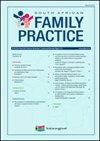如何在生命末期接触病人和家属
IF 1.2
Q2 MEDICINE, GENERAL & INTERNAL
引用次数: 0
摘要
医护人员经常要面对生命末期病人的治疗,这可能会让他们感到非常畏惧。本文希望能帮助医护人员掌握临终关怀的管理方法,减少患者的痛苦。临终症状包括谵妄和/或躁动、呼吸改变、皮肤改变、睡眠增多、饮食需求减少、大小便失禁和分泌物增多。文章对这些症状进行了讨论,并给出了实用的处理方法。文章进一步讨论了如何与家人进行艰难的对话,并就需要讨论的内容提供了指导。文章还讨论了如何让家人做好准备来处理家中的死亡事件。对于处理临终关怀的从业人员来说,研究应对机制和自我护理至关重要,因为病人的死亡不仅会影响家属,还会影响从业人员。本文章由计算机程序翻译,如有差异,请以英文原文为准。
How to approach patients and families at the end of life
Healthcare practitioners are regularly faced with treating patients at the end of their life, and this can be very daunting. This article hopes to help the practitioner have an approach to managing end-of-life care that makes it less distressing. The symptoms at the end-of-life include delirium and/or agitation, breathing changes, skin changes, sleeping more, decrease in need for food and drink, incontinence, and increased secretions. These symptoms are discussed and practical ways of management are given. The article further discusses how to approach the difficult conversation with the family and gives guidance as to what needs to be discussed. A number of tips are discussed on how to prepare the family to handle a death at home. It is essential to look at coping mechanisms and selfcare for practitioners dealing with end-of-life care as the death of a patient not only affects the family but also the practitioner.
求助全文
通过发布文献求助,成功后即可免费获取论文全文。
去求助
来源期刊

South African Family Practice
MEDICINE, GENERAL & INTERNAL-
CiteScore
1.50
自引率
20.00%
发文量
79
审稿时长
25 weeks
期刊介绍:
South African Family Practice (SAFP) is a peer-reviewed scientific journal, which strives to provide primary care physicians and researchers with a broad range of scholarly work in the disciplines of Family Medicine, Primary Health Care, Rural Medicine, District Health and other related fields. SAFP publishes original research, clinical reviews, and pertinent commentary that advance the knowledge base of these disciplines. The content of SAFP is designed to reflect and support further development of the broad basis of these disciplines through original research and critical review of evidence in important clinical areas; as well as to provide practitioners with continuing professional development material.
 求助内容:
求助内容: 应助结果提醒方式:
应助结果提醒方式:


